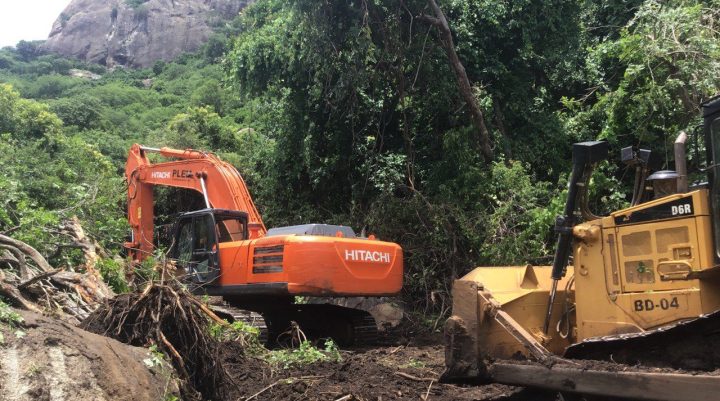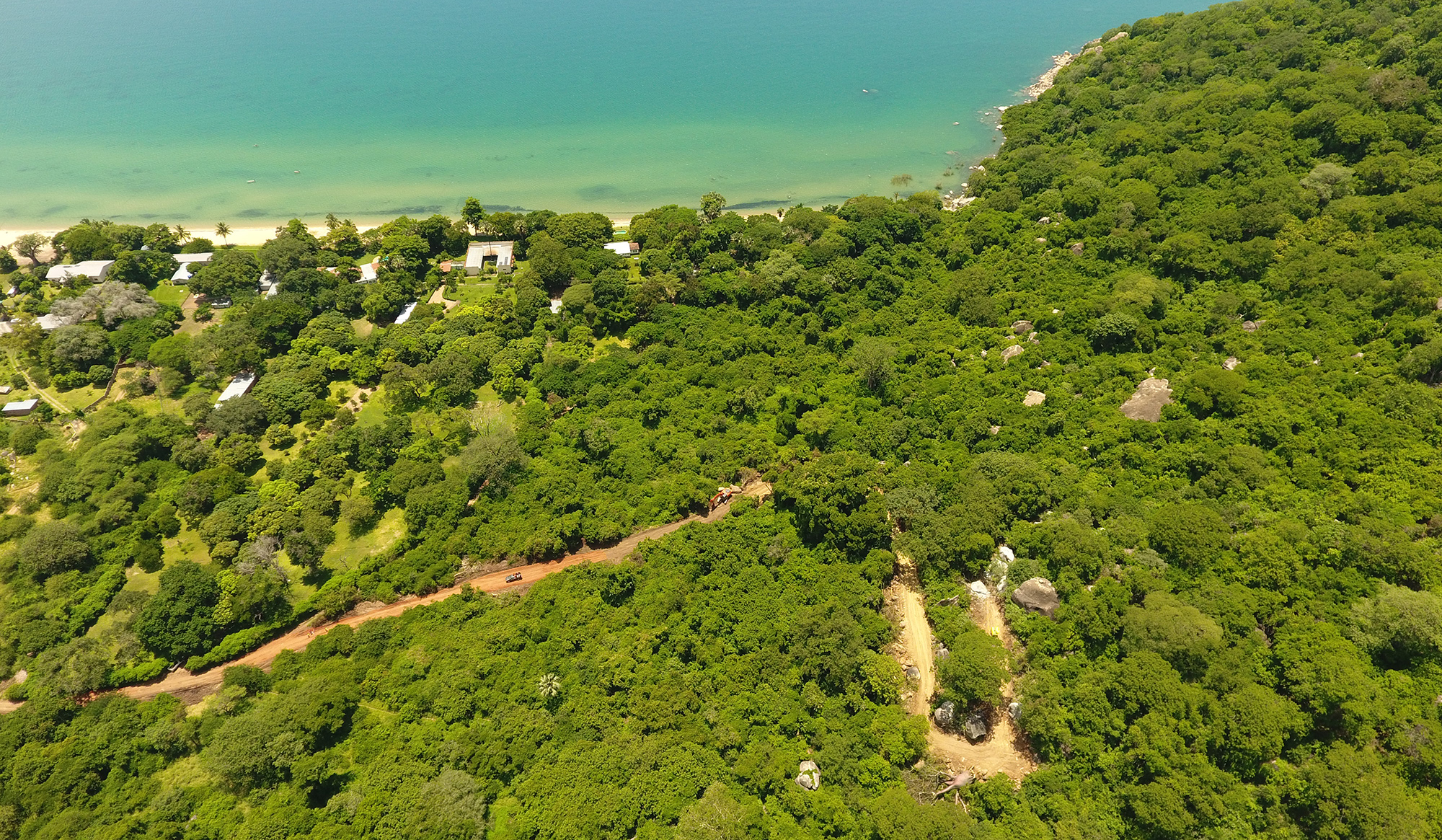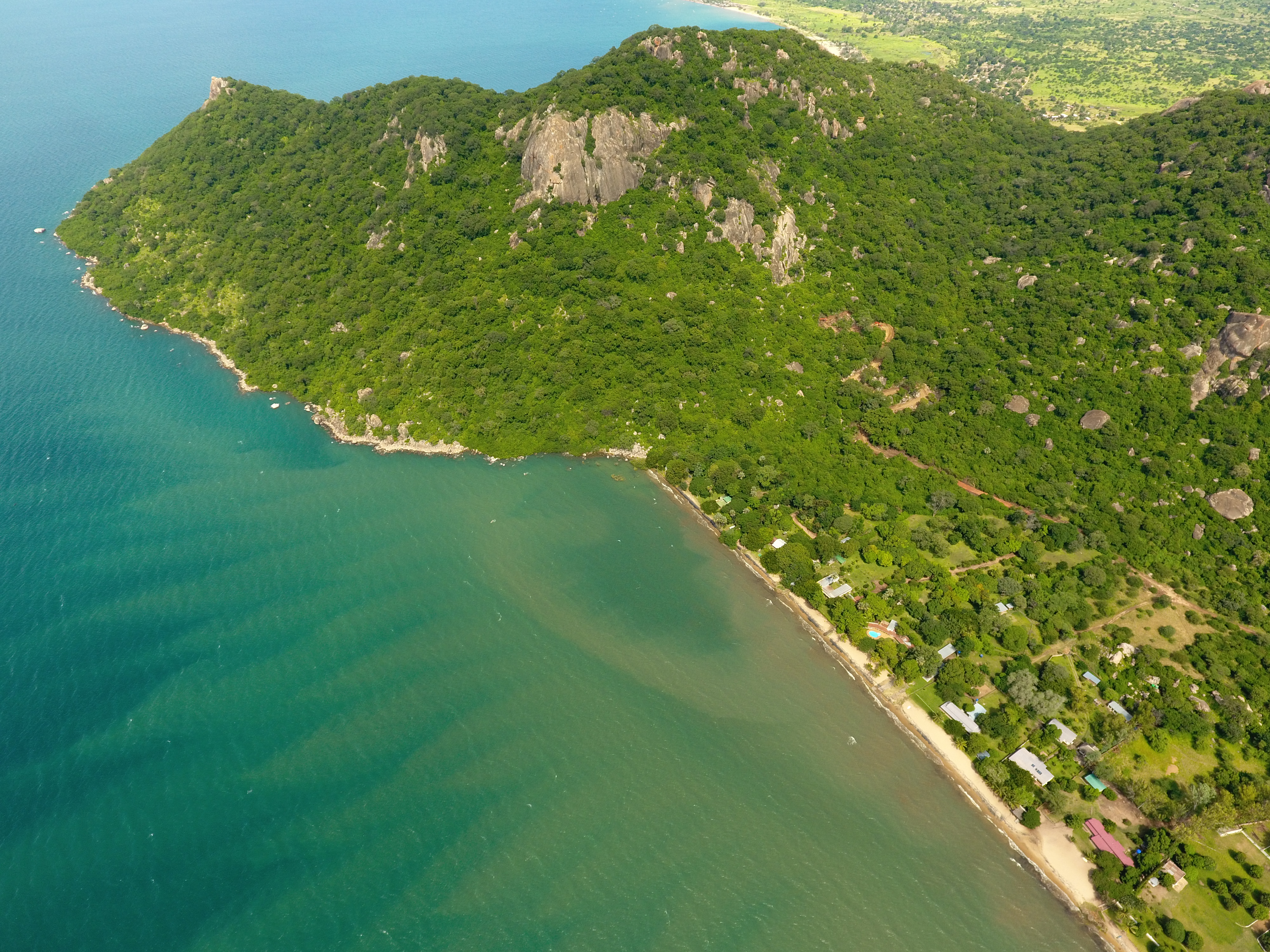$11-MILLION PROJECT
World Heritage Site at Lake Malawi threatened by planned water purification plant

The Environmental and Social Impact Assessment required for the $11m project has been found to be flawed and even its list of precautions has been breached.
It seemed to be a textbook case in getting it right for villages along Lake Malawi’s shoreline. Social planning at its best — funded by Arab oil that will save young girls trudging to and from the crocodile-infested lake with buckets balanced on their heads.
Sunken pumps would lift water from the lake to a purification plant and then it would be pushed to a storage facility on the nearby Nkudzi Hill. From there, gravity would feed it to thankful villagers. The project would be run by the Southern Region Water Board and funded by the Kuwait Fund for Arab Economic Development and the European Investment Bank.
What could go wrong? Almost everything, it turns out.

Road building takes place through pristine forest in Namaso Bay which overlooks Lake Malawi. Mud from the construction is sliding into Namaso Bay, threatening fish species that occur only in that area of the park and nowhere else on Earth. (Photo: Lake Shepherd)
The planned site overlaps the Nkhudzi Hill and Lake Malawi National Park, a Unesco World Heritage Site. The mountain is covered in old-growth forest and is home to endangered flora and fauna, including pangolins, which are critically endangered. It is also sacred to the Chewa tribe, who have not been consulted.
The Environmental and Social Impact Assessment required for the $11-million project has been found to be flawed and even its list of precautions has been breached. The contractor, Plem/Alghanim, which is ripping down the ancient forest and blasting rocks out of the way for a road, is being investigated for improper procurement of the contract. Loose boulders are being pushed down the mountainside with no concern for erosion, landslides or wildlife.
A 4,000 cubic litre water tank will be built on the top of the mountain, which is known for earth tremors. Mud from the construction is sliding into Namaso Bay, threatening fish species that occur only in that area of the park and nowhere else on Earth. With the cyclone season approaching, ever more mud will be washed into Namaso Bay. If the chemicals used in water purification ever got into the lake it would precipitate an ecological disaster.
Communities have been given false information that the potable water will be available free. Hotels along the intended pipe route have not been engaged and do not intend to connect with the pipe as they already have their own water systems in place directly from the lake.
In other words, it’s a mess and it could have been avoided. There are several other sites in the area far more suitable and cheaper to develop, but these have been ignored — as has a petition of more than 5,000 people calling for the construction to halt.
Environmental organisations have demanded that the European Investment Bank freeze funding, “conditional on Malawi and the Southern Region Water Board honouring its local and international laws and agreements and the preservation of the World Heritage Site” by building elsewhere.

Road building takes place through pristine forest in Namaso Bay which overlooks Lake Malawi, threatening local wildlife and plant life. (Photo: Lake Shepherd)
Lake Malawi National Park was inscribed as a World Heritage Site in 1984 and is at the southern end of Lake Malawi, which lies in the Western Rift Valley and is one of the deepest lakes in the world. It was the world’s first freshwater underwater park, declared to protect aquatic communities. The steep hills immediately behind the shoreline are within the protection area to prevent eroded sediments from polluting the lake.
The park has archaeological sites that have yielded one of the longest Iron Age pottery sequences in southern Africa, dating back to the year 320.
As you read this, ancient trees are crashing to the ground and huge boulders are being blasted to make a road to the mountaintop for the storage tank. Streams are being diverted, damaging access roads, flooding property and blocking drains with sediment.
Lower down, the forest is being cleared for the purification plant. Villagers had to take cover when unannounced blasting rained rocks on their village. It’s breeding time for many birds, but they are being displaced from their nests by the blasts.
To facilitate the underwater pumps, a 300m jetty is planned which will disfigure Nkhudzi Bay, one of the most beautiful bays on Lake Malawi. It is likely to affect the hydrology and change beach formation.
Malawian archaeologist Yusuf Juwayeyi was distraught about the construction.
“I fear that this project will destroy known and yet to be discovered archaeological sites in this Unesco-inscribed and protected national park.
“The project should not be allowed to proceed at its current proposed location. There is no shortage of places in the area where this project can be relocated to without disturbing this World Heritage Site,” said Juwayeyi.

A local poster protests against the road being built through a forest in Namaso Bay. (Image: Supplied)
Lake Malawi National Park protects about 1,000 species of fish, some 99% of them endemic. The lake has the largest number of fish species of any in the world (around 3,000), most of them extraordinarily beautiful cichlids. The importance of their extraordinary radiating speciation for the study of evolution is comparable to that of Darwin’s finches in the Galapagos Islands.
Potential damages flagged by the Southern Region Water Board at the inception of the project included the generation of dust and particulate matter emission, soil contamination, accidental or intentional disposal of chemicals, water pollution and siltation, loss of vegetation cover, disruption of water supply and an increase in Aids, spread by imported workers. These were not seen as reasons to hold up the construction.
Work began before an Environmental and Social Impact Assessment (Esia) was approved, stopped briefly, then started again when the Esia was “adjusted” to be more compliant.
Questions have been raised about why it’s located in the park. A group calling themselves Concerned Citizens and Residents wrote to the Kuwait Fund pointing out the damage its grant is enabling, but have had no reply. The European Development Bank has also yet to respond.

Road building takes place through pristine forest in Namaso Bay. The construction appears to violate the protocols of both the Kuwait Fund and the European Investment Bank and has raised protests from Unesco. (Photo: Lake Shepherd)
The construction appears to violate the protocols of both the Kuwait Fund and the European Investment Bank and has raised protests from Unesco. According to the Kuwait Fund, “The rapid economic growth taking place in many developing countries carries a potentially negative impact on the environment and human welfare in those countries. Hence, such growth needs accompanying policies that carefully scrutinise the environmental impact of each project and ensure all the necessary mitigating measures are adopted.
“Projects with environmental preservation and indigenous resource development receive high priority during decision-making on financing new projects.”
It appears the fund is not policing its own protocols, though the project is set to create long-term negative consequences for the Lake Malawi National Park and the country’s economy.
Unesco recommended that alternative locations be considered, allowing water to be provided to people while avoiding any potential impacts on the World Heritage Site. It suggested that the Esia be revised to address the several areas of concern noted and then resubmitted to Unesco before taking a final decision. Failure to take these steps and desecration of the area could mean the area would lose its World Heritage Site status.
Despite this, the project is rolling ahead, which raises some questions about who will benefit. According to Concerned Citizens and Residents, communities are unaware that the water will not be free and that there will only be 15 digital prepaid water points. This “silence” seems to be a strategy to solicit their consent.
Roads now being blasted through the forest will permit access to poachers and tree cutting for charcoal production.
There have been suggestions that the location of the project has to do with election votes or that the $11-million project provides opportunities for skimming at all levels, but nobody is prepared to put their name to the allegations for fear of victimisation. DM/OBP




















 Become an Insider
Become an Insider
Comments - Please login in order to comment.